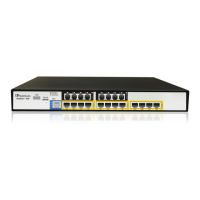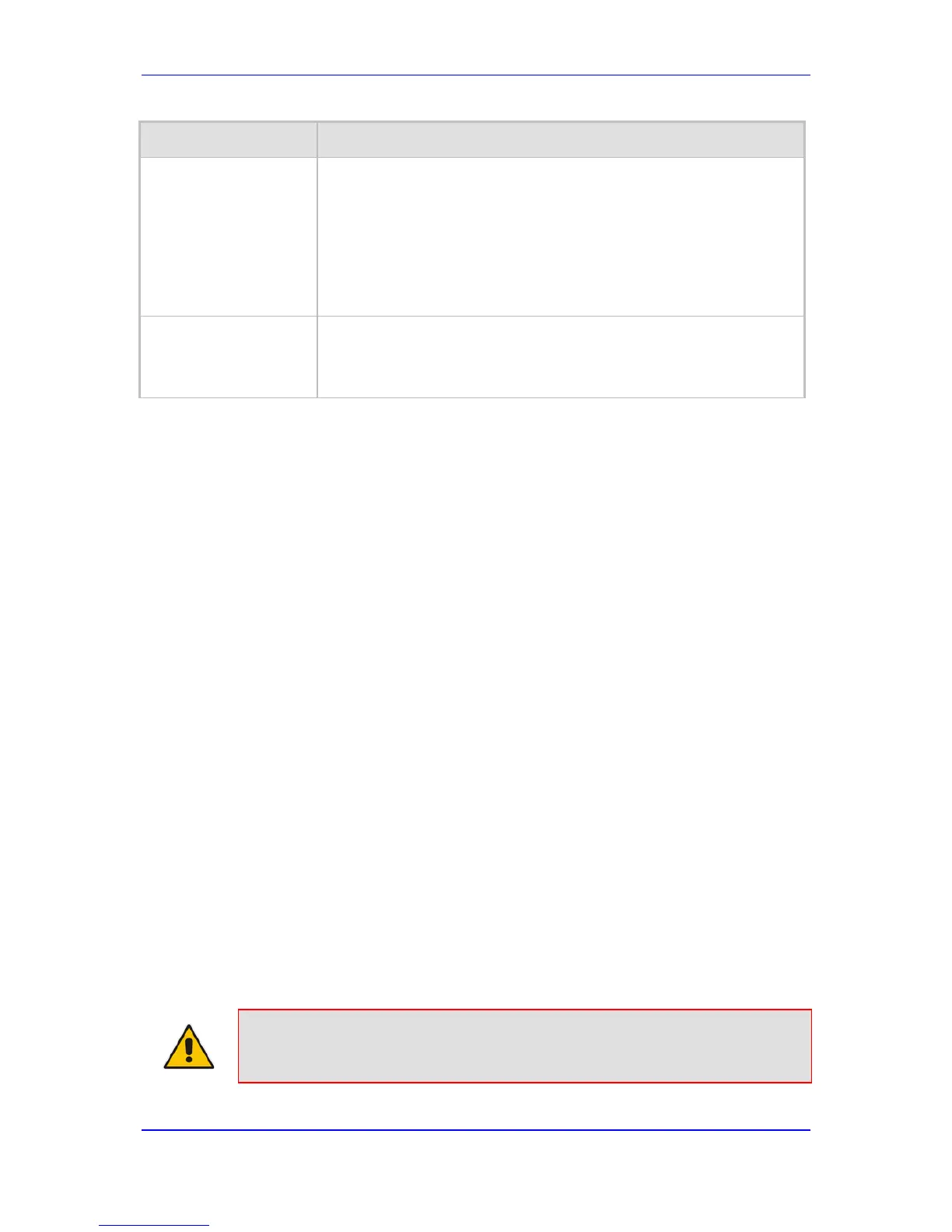upon receipt of 4xx, 5xx, and 6xx SIP responses (see Configuring
Alternative Routing Reasons on page
474). However, if no response,
ICMP, or a SIP 408 response is received, the device attempts to use
the alternative route even if no entries are configured in the ‘SBC
Alternative Routing Reasons’ table.
Multiple alternative route entries can be configured (e.g., Index 1 is
the main route - Route Row - and indices 2 through 4 are configured
as alternative routes).
Cost Group
[IP2IPRouting_CostGro
up]
CLI: cost-group
Assigns a Cost Group to the routing rule for determining the cost of the
call. To configure Cost Groups, see 'Configuring Cost Groups' on page
199.
By default, no Cost Group is assigned to the rule.
35.5.4 Blocking Calls from Unregistered SAS Users
To prevent malicious calls, for example, service theft, it is recommended to configure the
feature for blocking SIP INVITE messages received from SAS users that are not registered
in the SAS database. This applies to SAS in normal and emergency states.
To block calls from unregistered SAS users:
1. Open the SAS Configuration page (Configuration tab > VoIP menu > SAS Stand
Alone Survivability).
2. From the 'SAS Block Unregistered Users' drop-down list, select Block.
3. Click Submit to apply your changes.
35.5.5 Configuring SAS Emergency Calls
You can configure SAS to route emergency calls (such as 911 in North America) directly to
the PSTN through its FXO interface or E1/T1 trunk. Thus, even during a communication
failure with the external proxy, enterprise UAs can still make emergency calls.
You can define up to four emergency numbers, where each number can include up to four
digits. When SAS receives a SIP INVITE (from a UA) that includes one of the user-defined
emergency numbers in the SIP user part, it forwards the INVITE directly to the default
gateway (see 'SAS Routing in Emergency State' on page 501). The default gateway is
defined in the 'SAS Default Gateway IP' field, and this is the device itself. The device then
sends the call directly to the PSTN.
This feature is applicable to SAS in normal and emergency states.
To configure SAS emergency numbers:
1. Open the SAS Configuration page (Configuration tab > VoIP menu > SAS > Stand
Alone Survivability).
2. In the ‘SAS Default Gateway IP' field, define the IP address and port (in the format
x.x.x.x:port) of the device (Gateway application).
Note: The port of the device is defined in the 'SIP UDP/TCP/TLS Local Port' field in
the SIP General Parameters page (Configuration tab > VoIP menu > SIP
Definitions > General Parameters).

